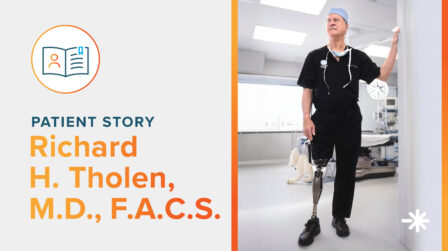Muscular Dystrophy
A family of diseases that causes decreased muscle size and increased muscle weakness.
Understanding Muscular Dystrophy
The body typically produces proteins that help form healthy muscles. Muscular dystrophy results from changes to genetic information and interferes with the production of these proteins. There is no cure for muscular dystrophy, but medications and therapy can help manage symptoms and slow the course of the disease.1
Types of Muscular Dystrophy
There are many kinds of muscular dystrophy. The most common form of muscular dystrophy is the Duchenne type. It is much more common in boys, although girls can be carriers and mildly affected. It is accompanied by many signs and symptoms that most commonly appear in early childhood and include:
- Trouble running and jumping
- Frequent falls
- Muscle pain and stiffness
- Difficulty rising from a lying or sitting position
- Toe walking
- Large calf muscles
- Delayed growth
Other types of muscular dystrophy, such as Myotonic, FSHD, Congenital, Becker, and Limb-Girdle, may present with similar symptoms but are generally slower progressing and may not show up until adulthood. These other types happen fairly equally in males and females.
Treatment
Orthoses (braces) may often be prescribed for individuals with muscular dystrophy. Their primary functions are to provide support for weakened muscles while walking and slow the muscle tightness that can occur at the ankles, knees, and hips. There are two types of orthotic devices most commonly prescribed to help those with muscular dystrophy:
- Ankle-foot orthoses (AFOs) are either prefabricated or custom devices that extend from the foot, across the ankle, and end just before the knee. They are usually custom-made and very durable. Their main function is to facilitate walking and reduce pain during ambulation.
- Knee-ankle-foot orthoses (KAFOs) are similar to AFOs but extend above the knee if a greater level of instability and weakness is present. They are also customized for each individual and typically made of plastic, metal, and/or carbon fiber.
1 www.mayoclinic.org>sumptoms-causes>syc-20375388 | 2 https://musculardystrophynews.com/orthotic-devices
Latest Updates
Subscribe to stay up-to-date on our latest posts.


